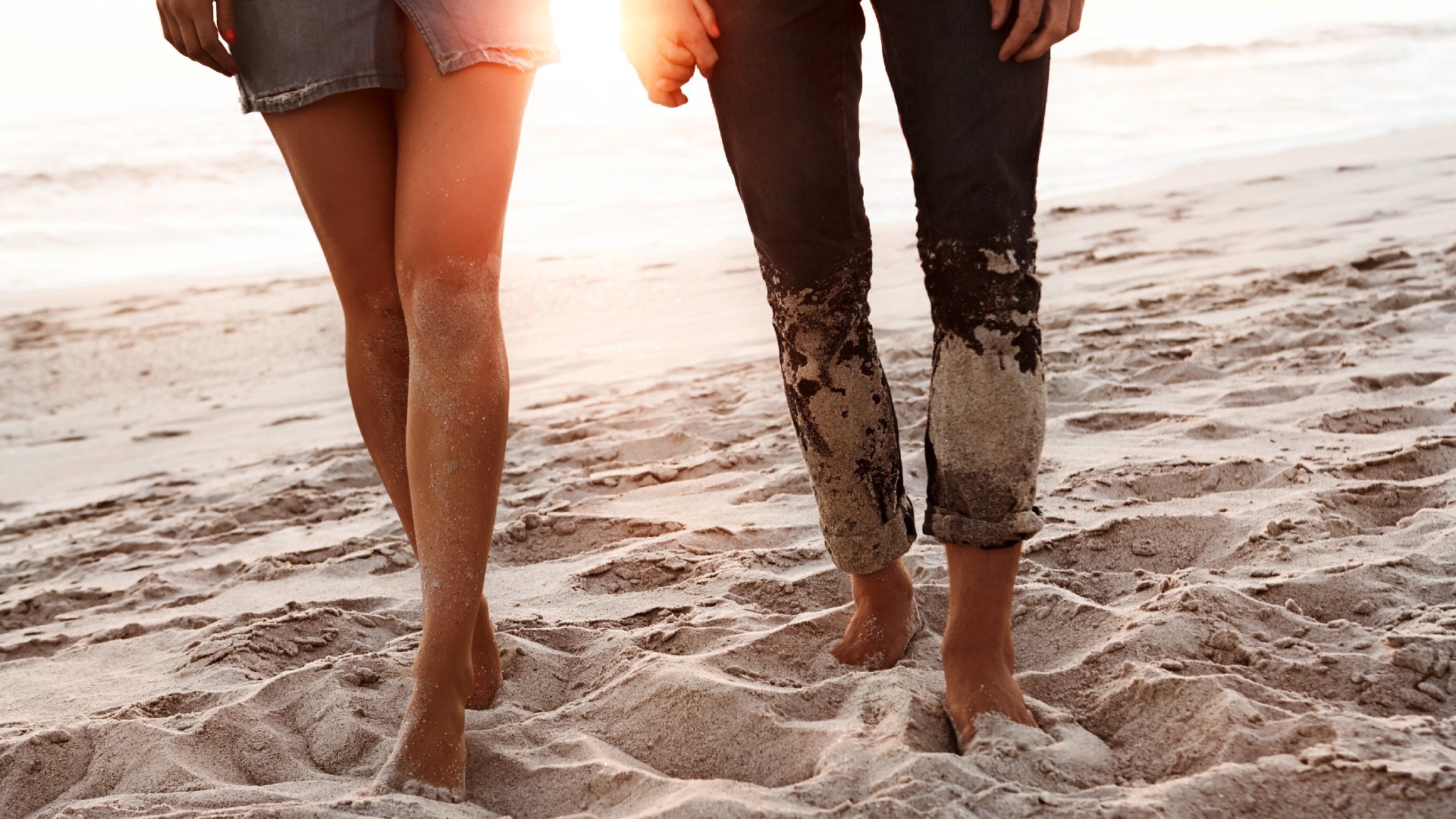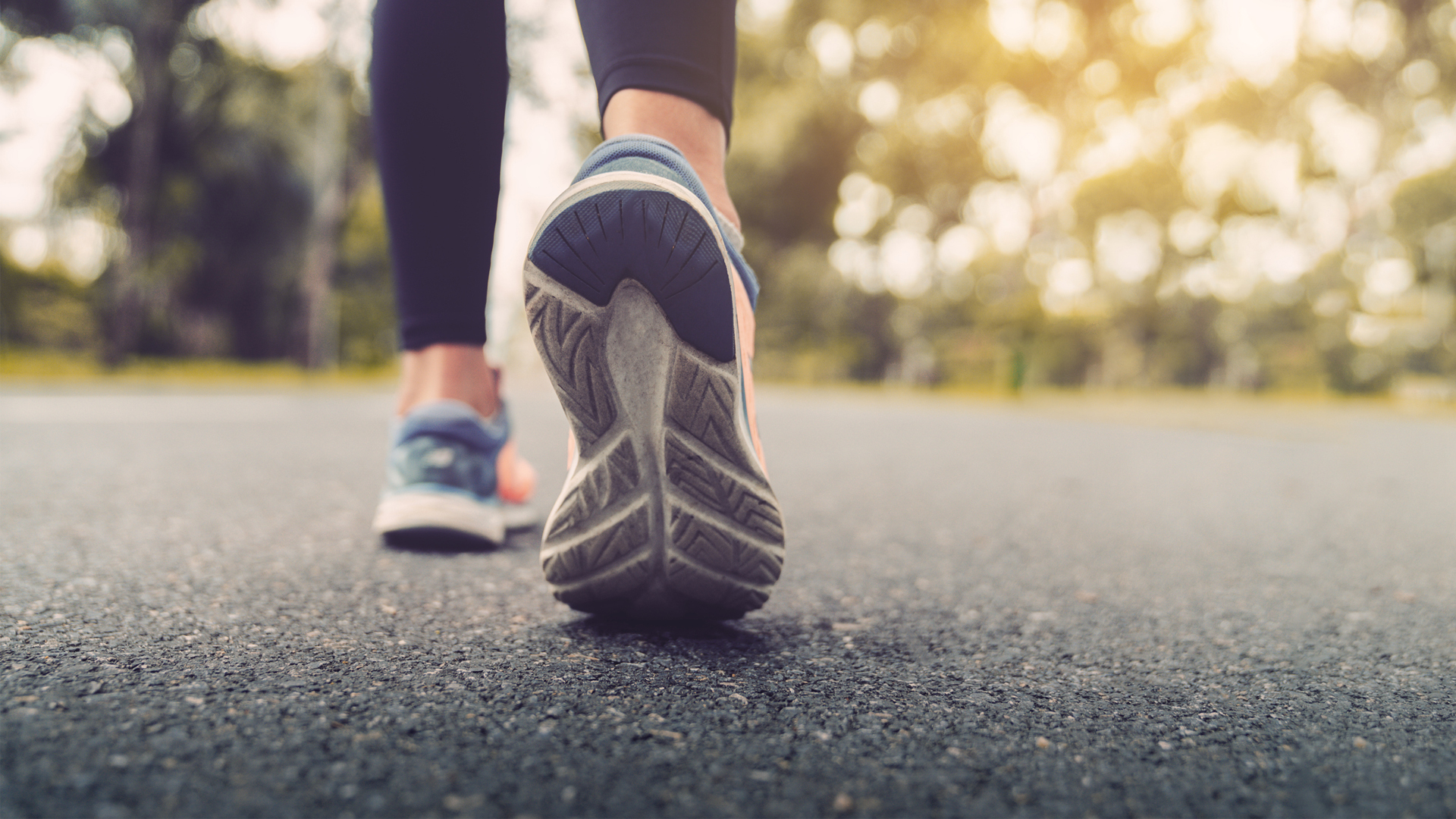Why is it so hard to walk on sand?
Sand is difficult to walk or run across. But why?

For some people, nothing beats a long walk on a sandy beach. But there's no denying that it's not as easy or as fast to get around on the beach as it is on a road or a sidewalk. But why is it so hard to walk on sand?
"The problem with sand is that it's soft; you 'sink in' at each step," Paola Zamparo, a biomechanics researcher at the University of Verona in Italy, told Live Science in an email. This forces you to use 2.1 to 2.7 times more energy with every step you take, according to a study in the Journal of Experimental Biology.
But it's not just that sand deforms when you step on it; the unevenness of beaches and sandy dunes also makes them tricky to move across. "On sand, the base of support is also irregular, and to move on irregular terrain requires additional energy," Zamparo said. This forces your body to make small, often subconscious adjustments to your gait, engaging muscles — especially in the ankle and foot – that might otherwise get more rest. These muscles "will need to actively contract to ensure stabilization," said Barbara Grant, a biomechanics researcher at the University of Liverpool in the U.K. A similar effect is also at play when you hike on a trail with lots of rocks and roots; even if you walk at a reasonable pace, you'll still tire out faster than you would when walking on a sidewalk.
Related: Why do we bend our arms when we run?
Another idea is that people walk differently on sand than they do hard surfaces, a 2022 study in the Journal of the Royal Society Interface found. Grant and her fellow researchers at the University of Liverpool compared how people walked on foam versus solid surfaces by analyzing the forces under their feet and how much oxygen each person consumed. They found that walking on soft surfaces, such as sand, mud and snow, caused people to take longer strides and make larger motions at their hip and knee — actions that use more energy than walking on a solid surface.

Interestingly, scientists have found that running on sand reduces the disparity in energy expenditure. Running along the beach requires only about 1.6 times as much energy as running on a flat, stable surface. However, because running (at least at a fast pace) is more energy-intensive than leisurely walking is, you'd still spend a lot more energy sprinting over sand compared with strolling on it.
But as experienced beach walkers know, there's a way to make it easier to walk on sand: Just add water.
Get the world’s most fascinating discoveries delivered straight to your inbox.
"When sand is wet, it becomes more compact, and walking on it is more similar to walking on firm terrain," Zamparo said. In other words, it's much easier to cross a beach by walking along the shoreline, where the waves roll in and out. This is a balance though; too much water could make the sand soupy and soft once again.
If water isn't an option, there is another way to make traversing sand easier: "Increase your surface area," Grant told Live Science. This could be accomplished by wearing shoes or changing your gait, landing more flat-footed than you might otherwise.
Although it's more difficult, there are some good reasons to exercise on sand. "The impact forces are lower on sand than on firm terrain," Zamparo said. Research suggests that walking or running across sand is much easier on your joints and muscles, especially compared with an unforgiving surface such as concrete. This means sand is a better surface for helping athletes recover more quickly from workouts and for people who are rehabbing after injuries. In fact, many professional athletes, including NBA star Russell Westbrook, incorporate sand training into their workout regimens. However, Grant recommended exercising caution during sand workouts. "Due to the instability of the sand, there is potentially a greater risk of tripping or falling," she said.
So the next time you take a nice, relaxing stroll along the sand, remember this: You're actually working extra hard — all the more reason to celebrate with that margarita during your beach vacation.

Joanna Thompson is a science journalist and runner based in New York. She holds a B.S. in Zoology and a B.A. in Creative Writing from North Carolina State University, as well as a Master's in Science Journalism from NYU's Science, Health and Environmental Reporting Program. Find more of her work in Scientific American, The Daily Beast, Atlas Obscura or Audubon Magazine.

